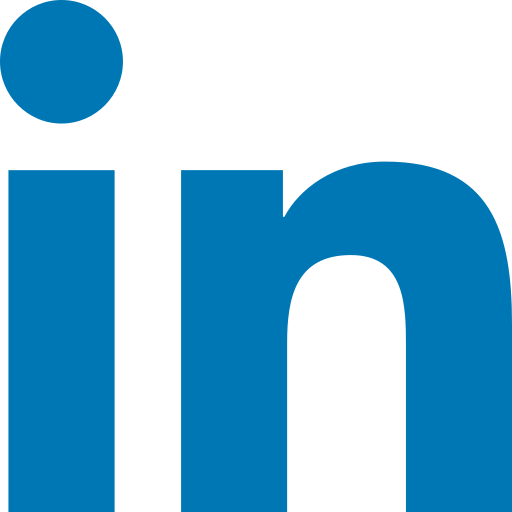-
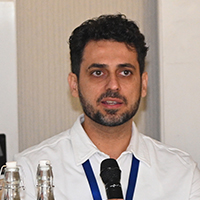 Mr. Prabhash Choudhary CEO (ITOBuzz)Balancing AI access for junior engineers
Mr. Prabhash Choudhary CEO (ITOBuzz)Balancing AI access for junior engineers- Initially we had a policy in our company that anyone less experienced in 3 years would not use AI tools, but what we discovered was they were previously trying to Google and find out things from, let's say, a blog post or let's say from Stack Overflow or something. Now, they are doing the same thing, they are doing the same thing with the use of AI. The problem is, when we let them do these things white coding is something you must have heard, so when we let them write entire project code bases with the help of AI, that is a problem.
- If they are looking for a specific solution then we let them use the AI. So, now what happens is, for junior developers, their tasks are divided and for all these smaller tasks, we allow them to use AI. So, what you see is they are learning and they are actually learning faster than what they would have in the traditional domain and the traditional way of reading blogs or going to Stack Overflow, so this is much faster.
- We have seen people who are intelligent, maybe they spent like one year in the company, now they are able to handle a different kind of workload altogether. So, I would say, let your juniors, let your young engineers use AI, but you don't give them entire big projects yet and don't let them write entire code bases with the use of AI.
-
 Mr. Avkash Kakadiya Founder & CEO (iTechNotion Private Limited)The Shift from Traditional Development to AI-Driven Solutions
Mr. Avkash Kakadiya Founder & CEO (iTechNotion Private Limited)The Shift from Traditional Development to AI-Driven Solutions- Website development was on boom when we started our agency. But soon SAAS became popular. But again AI came into the frame. I figured this out like if you want to be on some subject, you have to do your own study, you have to put some research, put your time, effort and your money into something and then you get the response.
- If we reduce the time of development, we are going to help them get early into the market which is actually going to help them to see market entry, product market fit and there are a lot of benefits of it. And this is actually giving them value.
- Now, the question is, is it affordable? Is it going to cost us or the customer or who is going to bear the cost? Learning AI, playing around with AI is easy but when you start training your model, when you start setting up your own infrastructure, I mean believe me for me it was super costly.So, until and unless you have deep pockets or your customer has deep pockets, you can't do it fully.
-
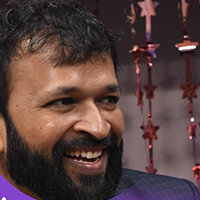 Mr. Nitesh Lohar CEO (Ridgeant)AI Adoption as a Strategic Response to Market Shifts
Mr. Nitesh Lohar CEO (Ridgeant)AI Adoption as a Strategic Response to Market Shifts- If they want to learn, they will learn. The only goal should be that the people we are hiring should have good reasoning and analytical skills. That is what we should focus on. We have to adapt to it, and we have to be our best, in this scenario. Now how can you use AI in your daily life? And how you can adapt it, how you can prioritize it? The first thing that you should do now is, like, basically, our organization wants to add AI and wants to build something out of it. The first use case is, find what core expertise or what domain you are working with.
- The biggest struggle for companies right now is against the use case because everybody's talking about AI, but no one has the real use case and how and what we should automate. So that is the best way to implement a use case. You can build, use case out of your customers. Go and talk to them and find the use case and external. That is how we build most of our use cases in health care, in real estate, and even in other industries. In the logistic and supply chain, we have, like, five use cases we built with the, and those are all use cases we have implemented in. So that is the best way.
- Let's say, if you have a if you're a customer and you find a use case, you can build it within two days or three days or five days. So optimize your prompt, optimize your platform, and then, you can go to the market easily. That is the other way. That is what we have done. We have built our own platform which can build any use case within two days or three days. So that way, you can implement the AI and go to market time will be reduced. So that is the one goal.
-
 Dr. Naveen Sharma CEO (Modern Digital Innovation Foundation & Greenfinch Global Consulting)The real challenge isn’t learning AI—it’s unlearning outdated processes
Dr. Naveen Sharma CEO (Modern Digital Innovation Foundation & Greenfinch Global Consulting)The real challenge isn’t learning AI—it’s unlearning outdated processes- Every time a new technology or new process or new way of doing things happens, it is not easy for those who are already doing the things. Like when computers were not there, there were all, accountants were there who were doing these things on the, it was not easy for them to do this accounting on the computers but the new chaps who started this learning tell you to do that, they were more effective. So what I believe, learning and giving the tools what is important is sometimes unlearning is required as well and that is the most important part of our system when we want to give new technologies. Unlearning is also an important thing for our employees.
- I believe it happens in the same way as a human being, if I am going to a doctor who is a specialist of skin, he will give a good reply but if I am going on a general medicine maybe he will not be able to detect the system, same thing happens in artificial intelligence. So there should be properly trained models there, I think obviously it will detect like I have worked with a few of the cancer institutes in America and their AI systems and how they are running. So it is not about whether it's wrong or right, it is how much knowledge the system has.
- I had a conversation with one of the largest IT companies in Jaipur, which has over 3,000 employees—most of them trainees—and a reported turnover of around ₹4,000 crore. Despite their size, their focus is primarily on building basic chatbots. When we approached them for a development project, we realized their mindset wasn’t aligned with more advanced or innovative work. We need to recognize that we, as innovators, must look beyond frameworks and simple chatbot implementations. Sure, these bots are easy to build, in high demand and fetch quick money—but they’re repetitive and limited in impact. When it comes to advanced models, even there we rely heavily on pre-existing tools and datasets. What’s missing is true innovation—what we, as individual organizations or through collaboration, can actually create from scratch. That’s a conversation we seriously need to have.
-
 Mr. Arpit Zala CEO (Zenithive)Before AI, focus on data: Building the right ecosystem
Mr. Arpit Zala CEO (Zenithive)Before AI, focus on data: Building the right ecosystem- No one is talking about what feeds the AI : data . How are we going to create that data? We would really like to understand what's the data source you are using , how you are managing the data sources and data implementation.How we are going to create a great data ecosystem without data we are just exploiting the APIs.
- We need to think about how much value we are bringing to the customer, whether they are junior , and what values they are bringing to us. It's time to become more lean as a company, and understand how you can produce more value and how to set up the ecosystem of value creation. For example, now a lot of people don't have engineering backgrounds and still they bring great solutions and are great value creators.
- Nowadays we mostly have a consumer mindset. We don't create great things.we consume things. We don't create block chains but we have the best developers in the world. Whenever new technologies come you'll find the best developers from India. It's time to think with engineering mindset and be a solution architect on how you can create a great solution for your customer , rest of the things can be handled by team but it's all about creating great value.
-
 Mr. Pranav Nair CEO (Exillar)Balancing speed, cost, and stability in AI MVPs
Mr. Pranav Nair CEO (Exillar)Balancing speed, cost, and stability in AI MVPs- One key insight from our analytics is that cost is no longer just about money—it’s also about time. They expect an MVP that can be developed within 2–3 weeks and still deliver a high level of stability, especially with the rise of automation tools. Whether it's OCR solutions, finance automation, or agent-based systems, they want rapid delivery without compromising on stability. Their expectations are higher than ever.
- We train our models to achieve around 70% stability, which is actually a strong benchmark—but my main concern is whether clients are willing to invest the required time and budget to reach that level within tight timelines.
- My second question is: with how quickly the AI landscape is evolving, will we still be relevant six months from now? If we generalize our solutions and make them publicly accessible, can we still claim to have the best model at the 6- or 8-month mark?
-
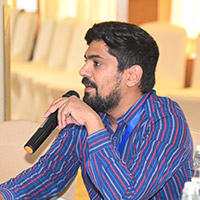 Mr. Ajay Pareekh CEO (Ethereal Softech)Publicly Accessible AI for Industry Transformation
Mr. Ajay Pareekh CEO (Ethereal Softech)Publicly Accessible AI for Industry Transformation- One of the models we developed around one and a half years ago is for the dentists industry, and health care industry. The product will be identified for their representative and cases. We identify the data and the API is available publicly with the product. We tied with the biggest organizations in the UK, we download data publicly available. We developed the product model. From the last one and a half years, it's been publicly available, and most of the insurance companies in the UK are consuming our APIs, and it's free of cost.
- So practically, we need a deep pocket. But the investment- Who did the investment? In our case, both our clients and we shared the cost.. But today, the IP is with us, and it's very publicly free of cost.This reflects the AI we’ve built for industry use. We're now applying a similar approach to a second sector in the UK—fintech and accounting applications.
- So right now, we are also building one of our other companies, KPM, which is also in the fintech industry and accounting applications. We are also building an application and product for an AI model that is also used for data transfer from one level to another level without human intentions. We are also building that. Definitely, after the completion of the product, we will also make it publicly. Most of the products we are building, we are also launching to the public, so they can also consume and use it.
-
 Mr. Vivek Sharma CEO (Provis Technologies Pvt. Ltd.)The Shift from Traditional Development to AI-Driven Solutions
Mr. Vivek Sharma CEO (Provis Technologies Pvt. Ltd.)The Shift from Traditional Development to AI-Driven Solutions- Website development was on boom when we started our agency. But soon SAAS became popular. But again AI came into the frame. I figured this out like if you want to be on some subject, you have to do your own study, you have to put some research, put your time, effort and your money into something and then you get the response.
- If we reduce the time of development, we are going to help them get early into the market which is actually going to help them to see market entry, product market fit and there are a lot of benefits of it. And this is actually giving them value.
- Now, the question is, is it affordable? Is it going to cost us or the customer or who is going to bear the cost? Learning AI, playing around with AI is easy but when you start training your model, when you start setting up your own infrastructure, I mean believe me for me it was super costly.So, until and unless you have deep pockets or your customer has deep pockets, you can't do it fully.
-
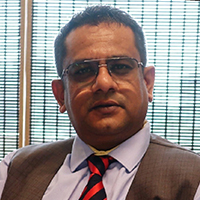 Mr. Varix Patel CEO (Covrize It Solutions Private Limited)Exploring international markets: lessons from Korea and Japan
Mr. Varix Patel CEO (Covrize It Solutions Private Limited)Exploring international markets: lessons from Korea and Japan- I started the company three years ago, initially focusing on tech, delivery, and operations.Sales was a new area for me to explore and learn.
- I got an opportunity to join a government-supported expo and visited Korea, seeing it as a potential market.During COVID, I observed promising shifts in Japan's younger generation, which gave me hope. Based on that, I assumed Korea might show similar potential and visited multiple times.
- I assumed Korea would offer good opportunities, but when we visited and met with top corporate leaders we faced a major hurdle: the language barrier. The country is highly localized, to the extent that even basic signboards are not in English. In meetings, they would explain their software entirely in Korean, often assuming we could understand, simply because we were attending.
- We got some work through clients who used both English and Korean. But without knowing Korean, it was very hard to grow the business. People there are very private about their data, and even Google Maps doesn’t work. Talking about technical changes was difficult because of the language, and we found very few tech people to connect with.
-
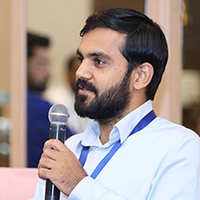 Mr. Jayesh Anandani CEO & CTO (Webelight Solutions)Company culture is not enough to retain talent in a competitive, remote-first world
Mr. Jayesh Anandani CEO & CTO (Webelight Solutions)Company culture is not enough to retain talent in a competitive, remote-first world- I agree culture plays a very important role. Right from your timings to the days that you work, to smaller things like playing cricket together, etc. There are a lot of people here who might have a good team of 100 as well. So we have been trying all of these. That's a trend you’ll see more these days because of the current expansion than before and more remote opportunities. Nowadays everybody wants to work from home or hybrid models.There are a lot of challenges for startups and different segments.
- Talking about finances, my biggest mistake I have done or learned from is that unless you don't understand your company’s finances like what is your company’s revenue, what is the appraisal you’re giving then you have made a coffin for yourself.Being a founder, the most important aspect is having control on your finances because you’ll get developers and everything but if the company shuts then nothing will be there.
- So sometimes it's an emotional decision that you wont be able to give increment and be transparent, but that is the situation where you’ll get to know who your people are, who’ll be staying. We did this recently, it became very difficult for us to do month on month appraisal. I told everyone there will be no appraisal for the next 4 months and to my surprise nobody resigned.
-
 Ms. Jigna Thaker Founder (Soft Coding Solutions)Flexible work culture: No punching or rigid schedules
Ms. Jigna Thaker Founder (Soft Coding Solutions)Flexible work culture: No punching or rigid schedules- We don't have punching machines for employees. This thing which I have added for the improvement how they don't have any fear like at what time I have to come
- Second, we also encourage a no leave policy so our employees don't have to think in mind like yes today I have to go on CL or SL giving some false reasons.
- So what we have done is as a developer your responsibility then it is your responsibility you have to cover up all your work of your client whatever it is assigned, if you are done if you are giving your 8 to 9 hours per day that is okay, if you are completing everything with your responsibility then it's good.
-
 Mr. Neel Mevada CEO & Founder (KoolMind Technolab LLP)Challenges in Multi-level Collaboration Models.
Mr. Neel Mevada CEO & Founder (KoolMind Technolab LLP)Challenges in Multi-level Collaboration Models.- I’ve had personal experiences in the past working with various partners. I focused on specific technologies and domains, I collaborated with others to fulfill client needs. However, I encountered situations where either the partner took the client and left, or the client directly hired the developer and moved on. What I realized through these experiences is that there’s often a significant gap between the client and the developer. For example, if I partner with someone who claims to have both client and developer connections but is actually outsourcing the development to yet another company, it creates a chain with 2–3 layers of separation. This layered structure leads to a lack of transparency, communication issues, and operational inefficiencies.
- It’s important to collaborate with partners who have direct access to resources or team members who will actually work with the client. Another thing I’ve learned is that when you have personal relationships with clients, maintaining those relationships becomes your responsibility. It’s not just about doing business—it’s about ensuring the connection continues beyond a single project.
- So what I also do is, I also have some friends, partners from Ahmedabad, from other cities also. Like a businessman we visit the customer's place sometimes to get the insights from their side or give some suggestions or make some good relationships. The same way I also do personal visits with partners.So that we can also build a relationship with my partners and this is a good idea to grow.


